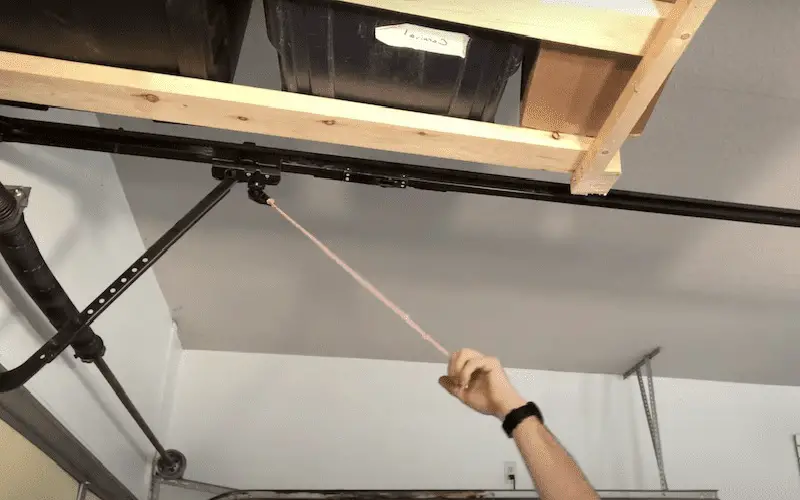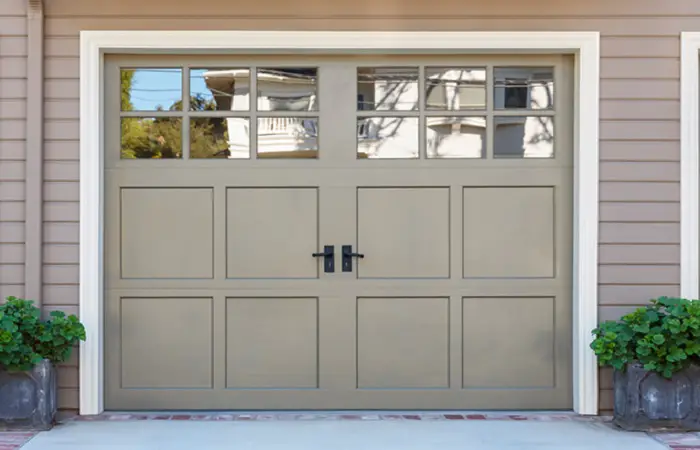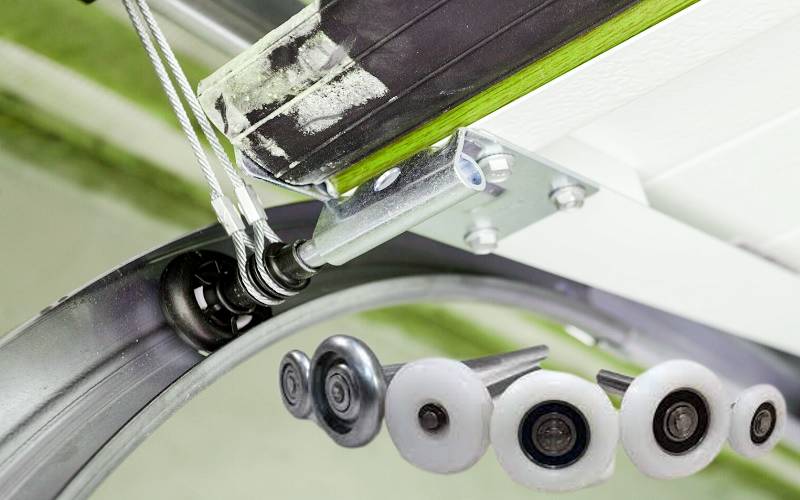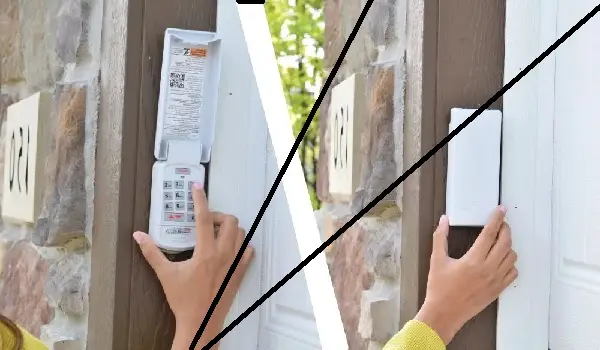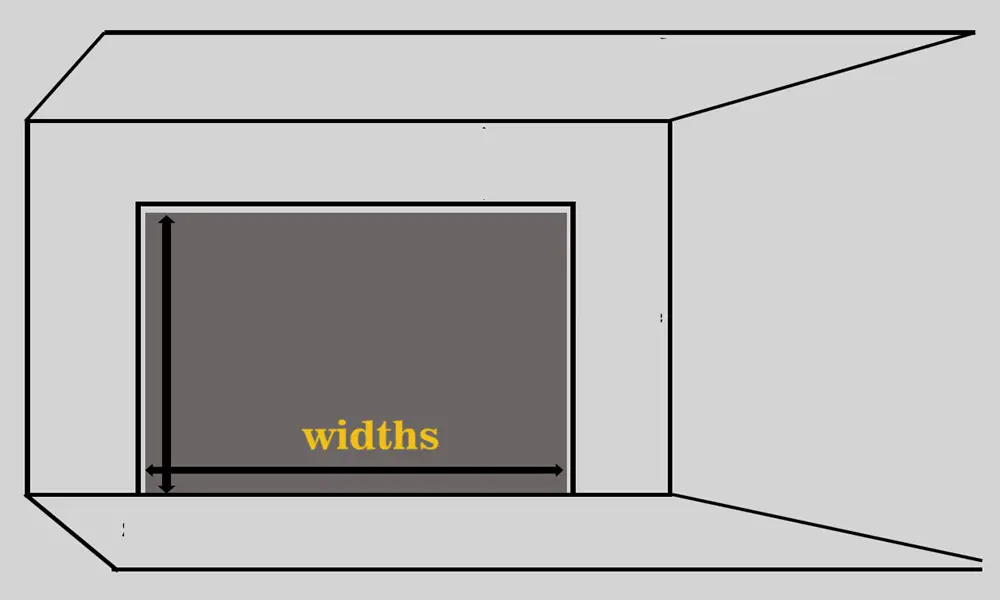Garage Door Torsion Springs: Everything You Need to Know
Garage Door Torsion Springs Garage door torsion springs are an essential component of your garage door system, as they help […]
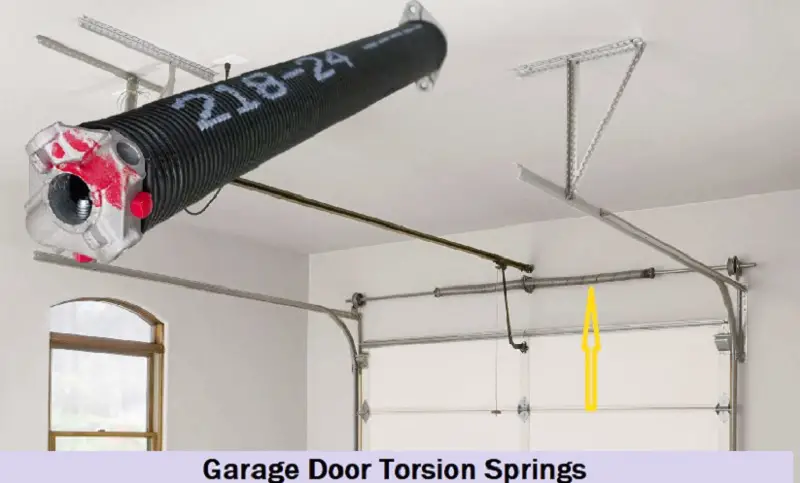
Garage Door Torsion Springs
Garage door torsion springs are an essential component of your garage door system, as they help to counterbalance the weight of the door and make it easier to open and close.
Most homeowners don’t think about their garage door torsion springs until they fail, which can cause inconvenience and potentially dangerous situations.
In this article, we will explore the function, types, maintenance, and replacement of garage door torsion springs, as well as provide tips for working safely with them.
Whether you are a homeowner or a professional, this article will help you understand the importance of garage door torsion springs and how to ensure their longevity and safety.
How Do Garage Door Torsion Springs Work?

As mentioned, garage door torsion springs work by storing and releasing energy as the garage door is opened and closed.
When the door is closed, the springs are under tension, storing energy. When the door is opened, the energy is released, allowing the springs to unwind and assist in lifting the door.
Garage door torsion springs work by storing energy in their coils, which is then used to lift the weight of the garage door.
When the door is closed, the torsion springs are under tension, meaning that their coils are tightly wound. As the door is opened, the springs begin to unwind, releasing the stored energy and lifting the door.
The torsion springs are installed above the garage door and are wound around a metal shaft.
The shaft runs through the center of the springs and is attached to drums at either end of the shaft. Cables are attached to the drums and are used to lift the door.
The amount of tension on the torsion springs is determined by the weight of the door and the amount of tension required to lift it.
When the door is installed, the torsion springs are adjusted to ensure that the door is properly balanced and can be lifted with minimal effort.
Read Also: The Top 10 Most Expensive Garage Door Openers On The Market
Types of Garage Door Torsion Springs
There are three main types of garage door torsion springs: standard torsion springs, EZ-set torsion springs, and TorqueMaster torque springs. Each type has its own advantages and disadvantages.
Standard Torsion Springs
Standard torsion springs are the most common type of torsion spring used in garage door systems. They consist of tightly wound coils of wire that are attached to a metal shaft above the garage door. The shaft is supported by a stationary plate and a winding cone at each end.

Advantages:
- Standard torsion springs are readily available and can be easily replaced if they break or wear out.
- They are typically less expensive than other types of torsion springs.
Disadvantages:
- Standard torsion springs require periodic maintenance, including lubrication and adjustment, to ensure proper operation.
- They can be dangerous to handle and install, and should only be serviced by trained professionals.
EZ-Set Torsion Springs
EZ-set torsion springs are a newer type of torsion spring that is designed to be easier to install and maintain than standard torsion springs. They consist of a single-piece spring and winding unit that is installed on the garage door shaft.
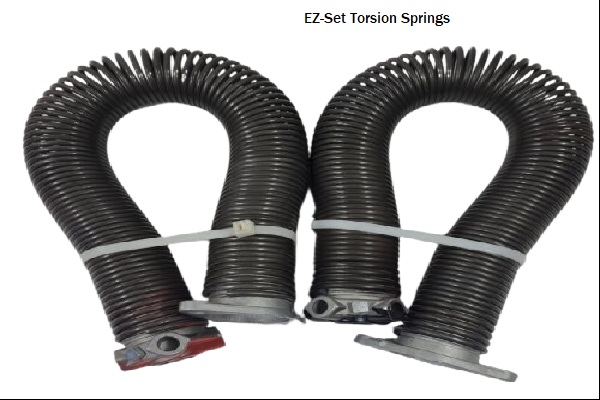
Advantages:
- EZ-set torsion springs are easier and faster to install than standard torsion springs.
- They require less maintenance than standard torsion springs.
Disadvantages:
- EZ-set torsion springs are typically more expensive than standard torsion springs.
- They may be more difficult to repair or replace if they break.
TorqueMaster Torque Springs
TorqueMaster torque springs are a type of torsion spring that is installed inside a steel tube above the garage door. The spring is wound inside the tube and is supported by a cable and drum system.
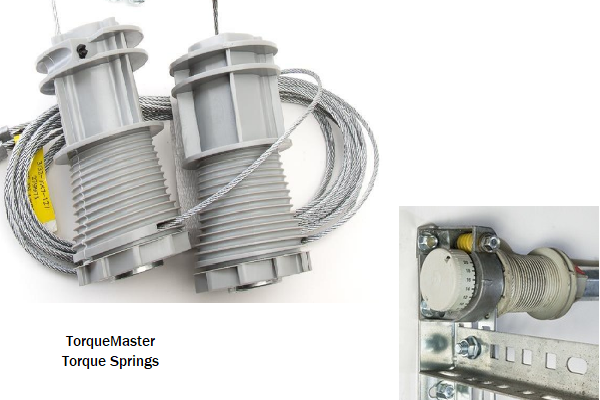
Advantages:
- TorqueMaster torque springs are safer and easier to handle than other types of torsion springs, as they are fully enclosed in a steel tube.
- They require less maintenance than standard torsion springs.
Disadvantages:
- TorqueMaster torque springs are typically more expensive than other types of torsion springs.
- They may be more difficult to repair or replace if they break.
Read Also: Types of Garage Door Springs
Factors to consider while choosing a garage door torsion spring
Choosing the right garage door torsion spring is important to ensure the proper operation and safety of your garage door system. Here are some factors to consider when selecting a torsion spring:
- Door Weight: The weight of your garage door is a crucial factor in determining the size and strength of the torsion spring needed. A heavier door will require a stronger spring to lift and balance the weight.
- Door Height: The height of your garage door also plays a role in selecting the appropriate torsion spring. A taller door will require a longer spring to provide the necessary lifting force.
- Spring Type: As mentioned earlier, there are different types of torsion springs available, each with its own advantages and disadvantages. Consider the pros and cons of each type and choose the one that best suits your needs.
- Spring Life Expectancy: The lifespan of a torsion spring varies depending on its quality, usage, and maintenance. Consider the expected lifespan of the spring and the cost of replacement when making your decision.
- Professional Installation: Torsion springs can be dangerous to handle and install, and should only be serviced by trained professionals. Consider the cost of professional installation when selecting a torsion spring.
- Price: The cost of a torsion spring can vary depending on the type, quality, and size needed. Consider your budget and the long-term cost of maintenance and replacement when making your decision.
Read Also:
Garage Door Spring Repair Cost
How to choose the right garage door spring
Choosing the right garage door spring is essential for the proper operation and longevity of your garage door. Here are some steps to follow when selecting a garage door spring:
1. Determine the type of spring

When choosing a garage door spring, it is crucial to determine the type of spring you need. There are two main types of garage door springs: extension springs and torsion springs.
Extension springs are typically found on older garage doors and are located on either side of the door above the horizontal tracks.
These springs work by stretching and contracting to provide the lifting force needed to raise and lower the door.
Extension springs are generally less expensive than torsion springs, but they are also less durable and can be more dangerous.
Torsion springs, on the other hand, are located above the garage door opening and are mounted on a metal shaft.
These springs work by storing energy when they are wound tightly and then releasing the energy to provide the lifting force needed to raise and lower the door.
Torsion springs are typically more durable and safer than extension springs, making them the recommended choice for most garage doors. However, they are more expensive and require more complex installation.
It is important to note that the type of spring you need will depend on the weight and size of your garage door. Consult with a professional to determine the best type of spring for your specific needs.
2. Determine the weight of your garage door
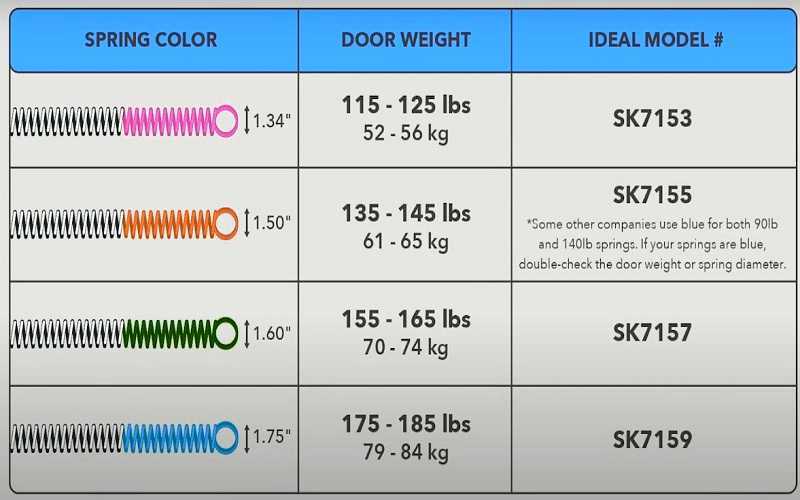
The weight of the door will affect the amount of torque required from the spring to properly lift and balance the door.
To determine the weight of your garage door, you can use a bathroom scale or a specialized door weight scale.
First, disengage the opener and manually lift the door until it is in the fully open position. Next, place the scale underneath the door and slowly lower the door until it is resting on the scale.
Record the weight displayed on the scale and repeat this process on the other side of the door to ensure that the weight is evenly distributed. Add the weight of each side together to determine the total weight of the door.
Once you have determined the weight of your garage door, you can select a spring that is appropriate for that weight.
Choosing a spring that is too weak can cause the door to operate unevenly while choosing a spring that is too strong can put excess strain on the opener and other components of the door.
Read Also: Garage Door Spring Color Codes
3. Measure the height of your garage door
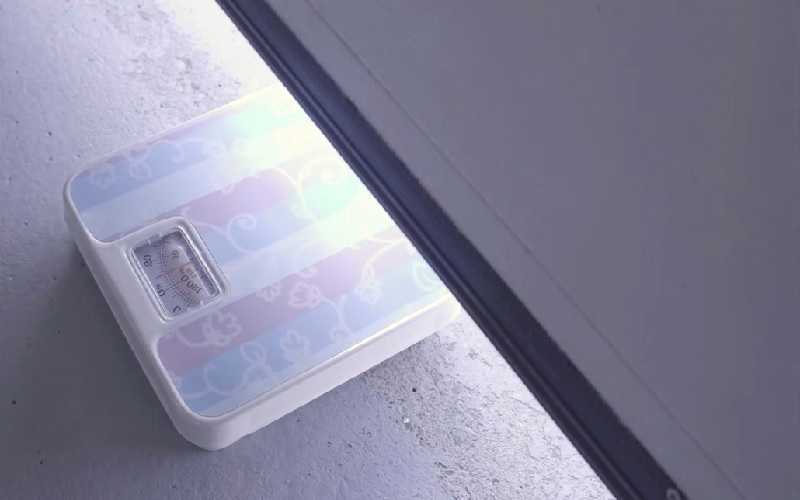
To measure the height of your garage door, use a tape measure to measure from the floor to the top of the door. This measurement will help you determine the length of the spring needed to properly lift the door.
It is important to note that different types of garage doors may require different spring lengths even if they are the same height.
Consult with a professional to ensure that you are selecting the correct spring length for your specific garage door. Choosing the wrong spring length can result in improper door balance, which can cause the door to malfunction or even become a safety hazard.
Read Also: How to Measure Garage Door Torsion Springs: A Complete Guide
4. Inspect existing springs
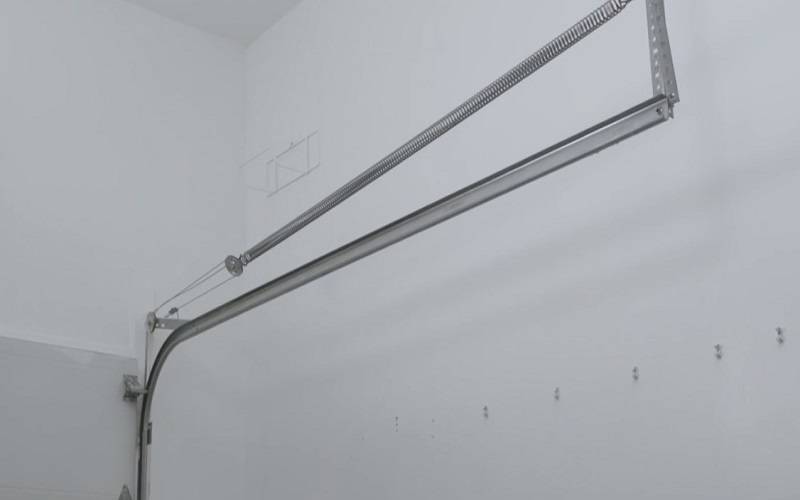
To inspect your springs, first, ensure that the garage door is closed and disengage the opener by pulling on the release cord. This will allow you to manually open and close the door without the assistance of the opener.
Next, locate the springs and inspect them visually for any signs of wear or damage. If you are unsure of what to look for, consult with a professional for guidance.
If your springs appear to be in good condition, it may be possible to simply adjust or lubricate them to improve their performance. However, if your springs show signs of wear or damage, it is recommended to replace them as soon as possible to prevent safety hazards and avoid costly repairs in the future.
5. Check the wind of the spring
Another important factor to consider when choosing a garage door spring is the wind of the spring. The wind refers to the direction in which the spring coils are wound.
There are two main types of spring winds: left-wound and right-wound. To determine which type of spring wind you need, stand inside your garage facing the door.
If the spring is located on the left side of the door, it is a right-wound spring. If the spring is located on the right side of the door, it is a left-wound spring.
It is important to choose the correct spring wind direction to ensure the proper operation of your garage door. Using the wrong type of spring can cause the door to operate unevenly or even become a safety hazard.
If you are unsure which type of spring wind you need, consult with a professional to ensure that you are selecting the correct spring for your specific garage door.
6. Determine The Wire Size
The wire size you need will depend on the weight of your garage door, as well as the length and diameter of the spring. Generally, the larger and heavier the door, the thicker the wire size needed for the spring.
To determine the appropriate wire size for your garage door spring, consult with a professional or refer to the manufacturer’s specifications. Using the wrong wire size can result in improper operation of the door and potential safety hazards.
It is also important to ensure that the wire size is consistent throughout the entire length of the spring. Inconsistent wire size can cause the spring to fail prematurely or operate improperly.
Overall, selecting the appropriate wire size for your garage door torsion spring is crucial for ensuring proper operation and safety of your garage door.
Read Also: Garage Door Torsion Spring Size Calculator
How much does a garage door spring cost?
The cost of a garage door spring can vary depending on several factors, including the type and size of the spring, as well as the location and availability of the product.
On average, the cost of a standard torsion spring can range from $30 to $60, while the cost of an EZ-set torsion spring may range from $40 to $80. TorqueMaster torque springs may be more expensive, with prices ranging from $80 to $120 or more.
It is important to note that the cost of the spring is only one factor in the overall cost of replacing or repairing a garage door spring. Hiring a professional to install or replace the spring can add additional costs to the project.
In addition, it is important to prioritize safety and quality over cost when selecting a garage door spring. Choosing a lower-quality or incorrect spring can result in improper operation of the door and potential safety hazards.
Signs of a Failing Garage Door Torsion Spring
Garage door torsion springs have a limited lifespan and will eventually fail. Some signs that your garage door torsion springs may be failing include:
- The garage door feels heavier than usual
- The garage door is slow to open or close
- The garage door makes loud noises when opening or closing
- The garage door won’t stay open or closed
If you notice any of these signs, it is important to have your garage door torsion springs inspected by a professional.
Garage Door Torsion Spring Maintenance
Regular maintenance can help extend the lifespan of your garage door torsion springs and prevent unexpected failure. Some tips for maintaining your garage door torsion springs include:
- Keep the springs clean and free of rust and debris
- Lubricate the springs with a silicone-based lubricant
- Have the springs inspected by a professional once a year
Read Also: The Ultimate Guide to Fixing a Broken Garage Door Spring
How long do garage door torsion springs last?
On average, a standard torsion spring may last between 5 to 7 years, while an EZ-set torsion spring may last between 7 to 10 years. TorqueMaster torque springs may have a longer lifespan, with some lasting up to 15 years.
It is important to note that these are just general estimates, and the actual lifespan of spring can vary based on individual circumstances. Signs of wear and tear, such as visible cracks or gaps in the spring coils, can indicate that it is time for a replacement.
Conclusion
In conclusion, choosing the right garage door torsion spring is crucial for the smooth operation and longevity of your garage door system. When selecting a spring, it is important to consider factors such as the type of spring, the weight and height of your garage door, and the wind of the spring.
Regular maintenance and inspection can help ensure that your garage door spring is functioning properly and prevent the need for premature replacement. While the cost of a garage door torsion spring can vary based on factors such as type and size, investing in a high-quality spring can ultimately save you time and money in the long run.
If you have any concerns or questions about your garage door torsion spring, it is recommended to consult with a professional to ensure that you are selecting the best option for your specific needs and to ensure the safe and effective operation of your garage door system.
